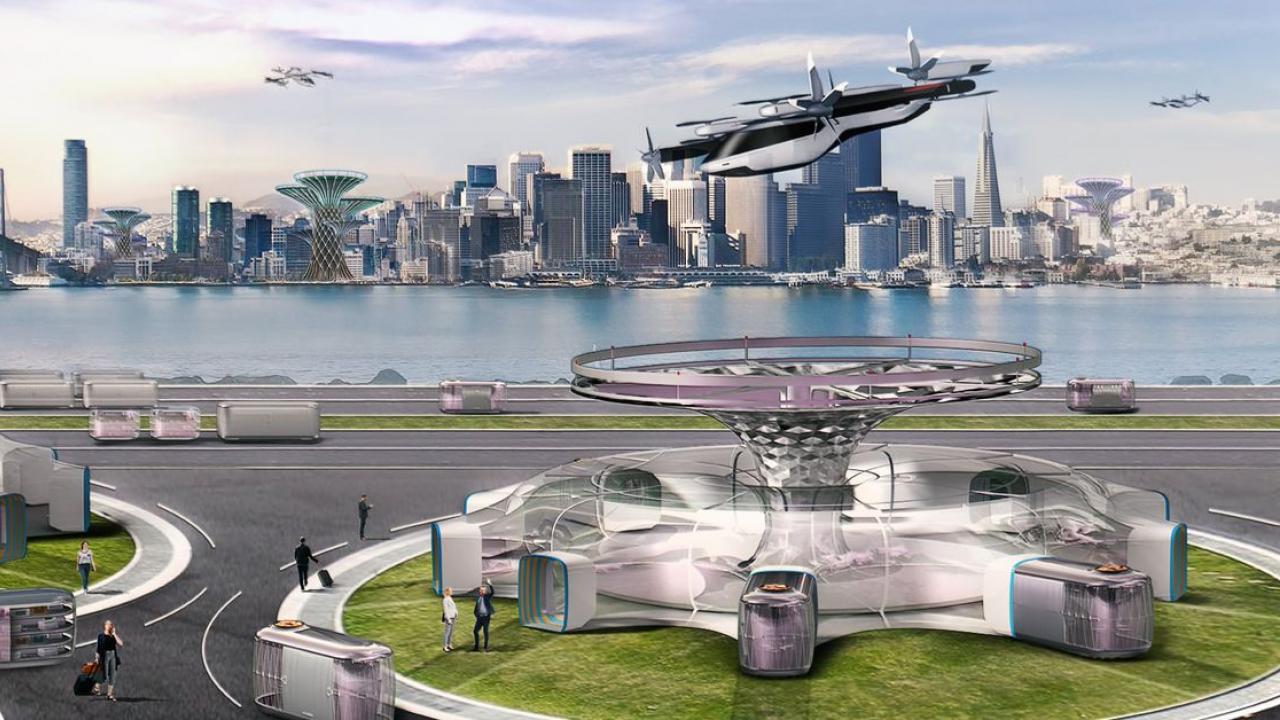
Seongkyu Lee partners with Hyundai to develop low-noise air taxis
Urban air mobility (UAM), or the use of air taxis, is poised to be the next big thing in transportation. Companies are already promising fleets in traffic-congested cities like San Francisco, Los Angeles and Dallas as early as 2023, and Morgan Stanley estimates that the UAM business will create a $1.5 trillion market in the coming decades.
“In movies, flying taxis usually convert from car to plane, but these UAM vehicles are more like a helicopter or rotorcraft, which can take off and land vertically,” explained mechanical and aerospace engineering assistant professor Seongkyu Lee. “There’s a huge potential in the economy, in the job market and in aerospace engineering."
Hyundai Motor Company is one of the first companies to enter the industry, announcing a new UAM division, tapping a former NASA administrator to lead it and partnering with Uber to build a fleet of vehicles. Lee will play a key role in this through a new project with Hyundai that tackles a key challenge in making UAM a reality—noise.
Noise is important because if these aircraft are too loud, people will reject the technology, so the goal is to make aircraft that produce the same level of noise as traditional traffic. Lee and his team will develop a new prediction tool for broadband noise and design a new low-noise airfoil to power a new fleet of airborne taxis.
“I’m very proud to say that Hyundai selected us as their partner to develop low-noise urban air mobility aircraft," he said.
Aircraft produce two types of noise: tonal and broadband noise. Tonal noise is the intermittent sound the blades make as they rotate through the air. Broadband noise is the whooshing sound the craft makes when it interacts with turbulence caused by the atmosphere, wake or internal wall-bounded friction called the boundary layer. While tonal noise has been extensively studied, broadband noise hasn’t due to the complexity and difficulty of flow turbulence.
Since the human ear is highly sensitive to the types of high-frequency broadband noise UAM vehicles produce, it is expected to be a more important factor in public acceptance than with a traditional helicopter. However, to predict this noise, researchers have relied on an old model which was developed 30 years ago for a specific airfoil.
For one part of the project, Lee’s group will help to change this by developing a new physics-based tool called UCD-QuietFly to quickly, accurately and efficiently predict how much broadband noise a craft will. The predictions are based on accurate calculations of flow turbulence, and can be applied to any type of aircraft.
For the other part of the project, Lee’s team will attack the problem directly by developing a new shape of airfoil that generates less noise. A new design based off the team’s models and new predictive tool should allow researchers at Hyundai and beyond to design better and quieter urban air mobility vehicles.
“This research is going to be very impactful to aerospace engineering,” said Lee.
The first-year, $120,000 project titled, “Broadband Noise Prediction Code Development and Optimization of Low Noise Airfoil,” began funding in December 2019.
